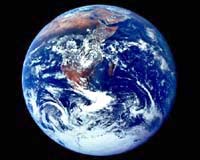The Dead Sea could disappear within 50 years unless a scheme to build a canal from the Red Sea to replenish the highly it was implemented soon, Jordanian Water Minister Hazem Nasser warned Tuesday."The Dead Sea could faces the risk of disappearing within the next 50 years," Nasser told an international water management conference in Jordan as he unveiled a plan to save it known as the Red Sea-Dead Sea Canal (RSDSC).
"This is a technical environmental problem before being a political water problem," Nasser said in statements carried by the Jordanian news agency Petra.
He urged experts from the United States, Europe and Arab countries gathered on the Jordanian shores of the Dead Sea since Sunday to campaign for it at home.
"Most of the technical arrangements and reference terms have been completed" by Jordan, Israel and the Palestinian Authority, which share the waters of the sea, the lowest point on Earth, Nasser said.
"Within the next few weeks we will send this information to the World Bank so that it can help Jordan and the countries carry out the necessary studies to implement the project," he added.
Nasser said the project is multi-phased and that the first phase alone, which entails the environmental protection of the Dead Sea, would cost around one billion dollars.
A pre-feasibility study has been completed but the final one that still needs to be drafted will cost five million dollars, the Jordanian water and irrigation ministry said.
"We hope that Jordan and the countries of the region will find (financial) help" to carry it out, Nasser said.
Plans for the 200-kilometer (124-mile) canal have been in the pipeline for years and were formally presented to an extraordinary meeting of the World Economic Forum in Jordan last year.
The project aims at stabilising the sea's level, which has been shrinking by about one meter (three feet) a year and whose area is about one third less than it used to be in the 1960s.
The highly salty body of water, in which nothing lives, now stands at 415 meters (1,366 feet) below sea level.
Its drop is mostly due to the diversion of the Jordan River for irrigation by the riparian countries.
The canal would produce 851 million cubic meters (30.1 billion cubic feet) of water each year, two thirds of which would be delivered to Jordan and the rest to Israel and the Palestinian Authority, according to the ministry of water.
The May 30-June 2 International Water Demand Management Conference is the first of its kind to be held in the Middle East, a region plagued by drought, scarce resources and water-related conflicts.
It is organised jointly by Jordan and US Agency for International Development (USAID).
All rights reserved. Copyright 2003 Agence France-Presse. Sections of the information displayed on this page (dispatches, photographs, logos) are protected by intellectual property rights owned by Agence France-Presse. As a consequence, you may not copy, reproduce, modify, transmit, publish, display or in any way commercially exploit any of the content of this section without the prior written consent of Agence France-Presse.
Quick Links
TerraDaily
Search TerraDaily
Subscribe To TerraDaily Express



